Tom Clancy’s The Division from Ubisoft and Massive Entertainment is a triumph of online world building, cooperative gameplay, and streamlined MMO design. It’s not just a threat to competitor Destiny, it’s a stark indictment of massively multiplayer games at large.
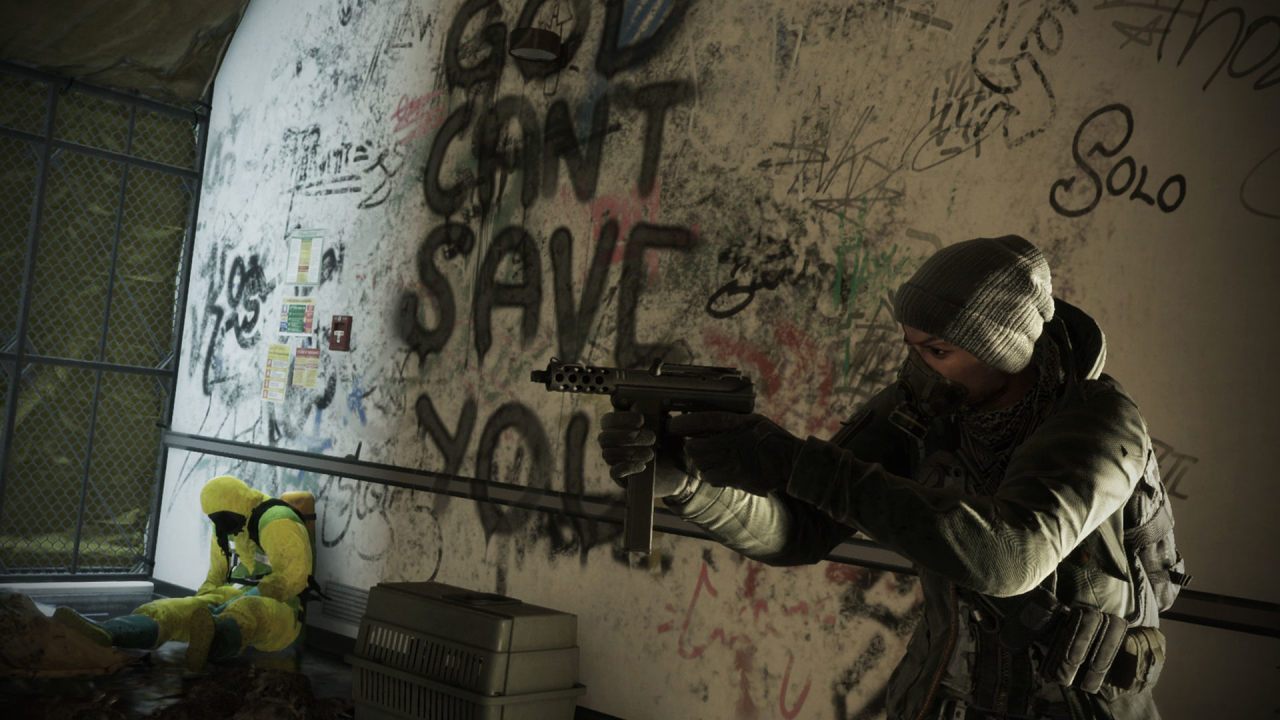
In The Division, mutant smallpox, AKA the “Dollar Flu,” AKA “Green Poison,” has ravaged New York City in the wake of a biological attack on Black Friday. The Division casts you as a sleeper government operative activated to bring the city back from the brink. This frozen, monolithic ghost town smacks of the apocalypse — despite the notable absence of zombies. Shambling corpses aren’t necessary; humans have destructive propensity enough to end the world ourselves, and the means by which to do it. In the world of The Division, we have.
Civilians are stumbling through the snowy streets, begging for bits of food or medical supplies. I offer one a bottle of water, and they give me a pair of shoes in exchange. Outside of the game’s mechanics, it paints a bleak little picture of the world at large. Around the corner, a looter is crushing the skull of a man who is clearly already dead, screaming at him as he drives the butt of his rifle downward. He spots me, but I’m faster. He’s dead before he can pull the trigger. A wayward bullet from the burst of gunfire hits a stray dog, and it slumps pitifully into the snow with a throaty whine.
The Division is full of these moments, strangely engaging despite the repetetive nature of the typical MMO grind. It accomplishes this by painting a world that is more raw and vivid than a thousand other virtual hellscapes and by tying every aspect of gameplay into your engagement with that world. It’s not perfect by any means, but it is, quite simply, excellent.
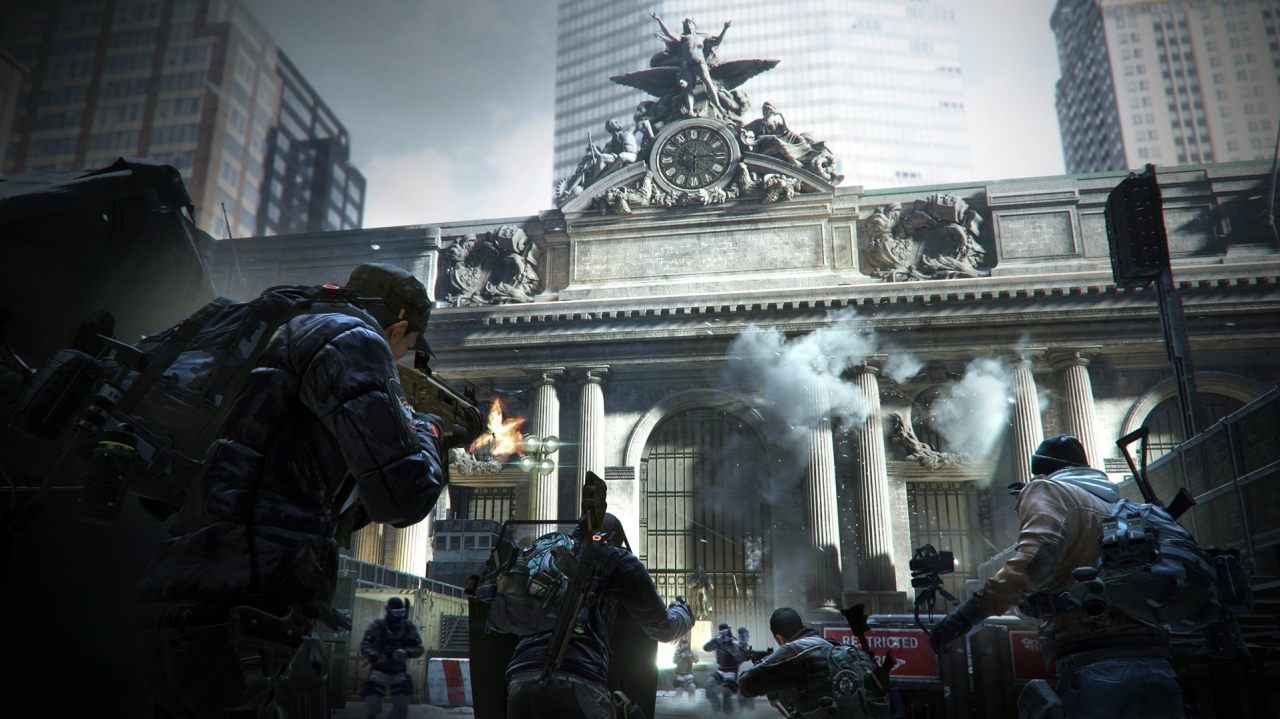
Character customization is roughly what you’d expect from World of Warcraft era games. There are predefined racial archetypes that can host dozens of little details, but the variation isn’t broad. Generally speaking, people look relatively similar beneath their layers of survival gear. It’s this gear — much like the aforementioned MMO standard — that provides the greatest sense of individuality. The important stat-based gear you get is supplemented by six slots for “appearance” items, coats and hats and the like. All together, it provides a vast palette of looks to separate you from your fellow sleeper agents.
Gameplay hovers somewhere between a typical shooter and an MMO. Enemies go down reasonably quickly, but begin to feel spongy if your weapons are outdated. It’s a down-shift in speed for action gamers, but still faster than most online RPG combat. And make no mistake, The Division is an MMORPG through and through.
All of your gear will provide bonuses to one or two of the three primary character statistics. Upgrading your loadout is a constant balancing act between raw weapon damage, durability, and the potency of your special abilities. Focusing on just one of these creates a very specific game experience, but wholly neglecting any one area could potentially cripple you in certain situations. The fine tuning of specialization and flexibility makes each item choice important, and you can clearly feel the difference when you’ve made decisions that work for your style of play.
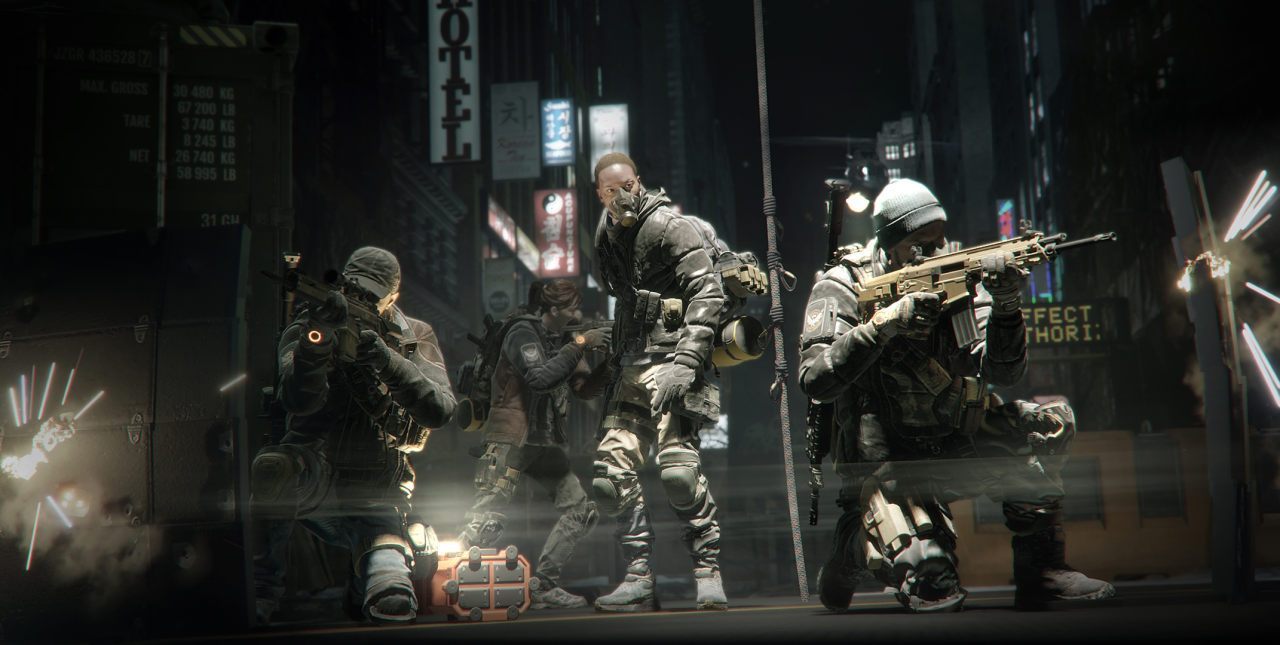
In addition to weapons and armor, you’ll have access to a slew of special abilities. There are deployable turrets, explosives, medical supplies among the twelve basic abilities. Each ability can then be enhanced with one of three additional features. Your deployable turret might turn into a multiple-enemy taser, or your seeker mines might become artificially-intelligent tear gas grenades.
You’ll be able to assign talents from an even wider array, a single one in your early levels, and up to five when you’ve reached the peak of your character’s growth. Additionally, numerous perks become available as you upgrade the base of operations from which The Division‘s second wave deploys across the city.
The base of operations provides a metagame, an upgradeable framework that — while lacking the customization of WoW‘s strongholds — delivers a sense of overall progress. You’ll begin in a ransacked post office flooded with helpless refugees, but in the end you’ll have constructed a truly formidable staging ground for the relief efforts. It’s the difference between the huddled masses crying in corners, and children laughing and coloring while a man plays a guitar on a bench beside a hastily appointed Christmas tree.
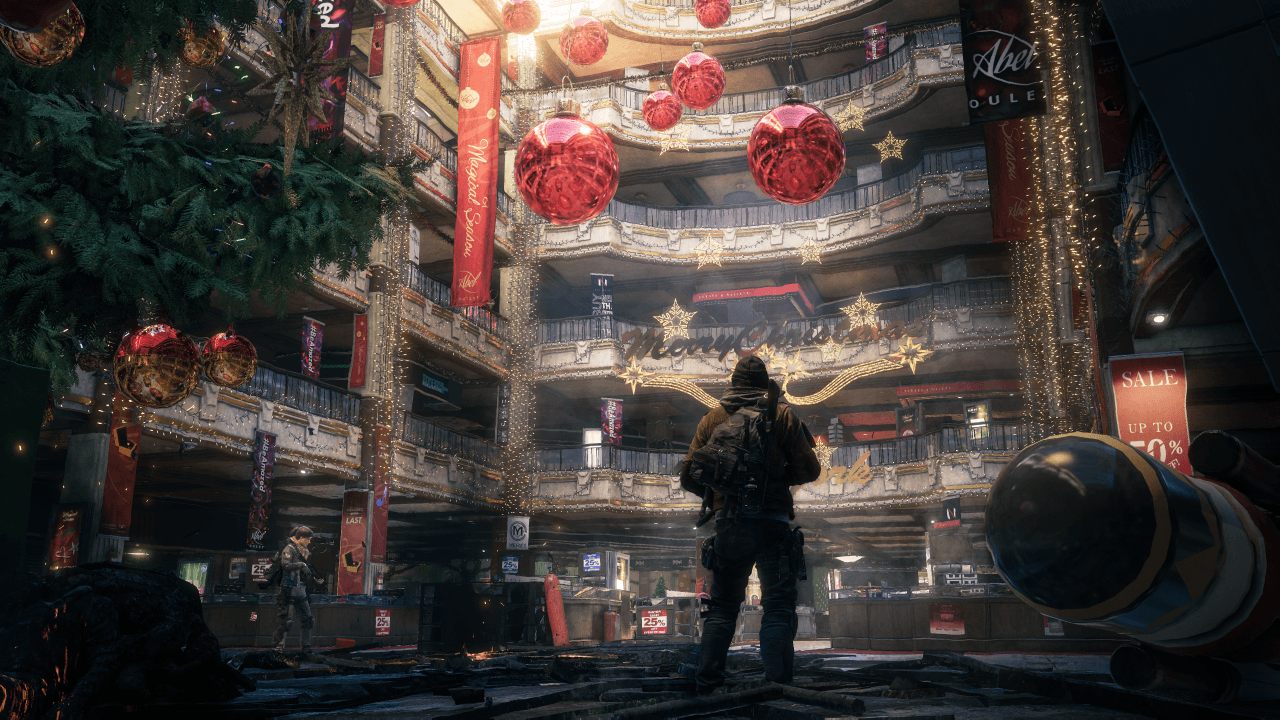
Your efforts in the frozen wasteland of NYC will earn supplies for the tech, medical, and security wings of that base of operations. Upgrades will spawn vendors, a steady stream of crafting supplies, and unique functionality in each. You’ll be able to reroll unwanted stats on your favorite items, purchase bonus appearance gear, and break down what you don’t want in order to forge something more to your tastes. Every step of the way, Massive Entertainment seems to have anticipated what you’d want to be able to do and implemented a means by which to do it.
Of course, because it’s an Ubisoft game, the map is positively flooded with collectibles. This time, however, they feel significantly more meaningful. Collecting items doesn’t just give you experience, it provides a vivid glimpse into the broken world that you’re striving to save.
Those glimpses are phenomenal. The voice work is reliably excellent, and the holographic reconstructed ECHO scenes are haunting. You’ll follow the stories of several survivors, hear children questioning the terror all around them, and compile a list of notes written in a lost survival guide. There are crashed drones to recover and missing Division agents to find. All of it is woven into a story that frequently becomes the centerpiece of a game seated firmly in a genre historically lacking in compelling narratives. Several players I encountered intimated to me that they didn’t expect the story to be their favorite part. Neither did I.
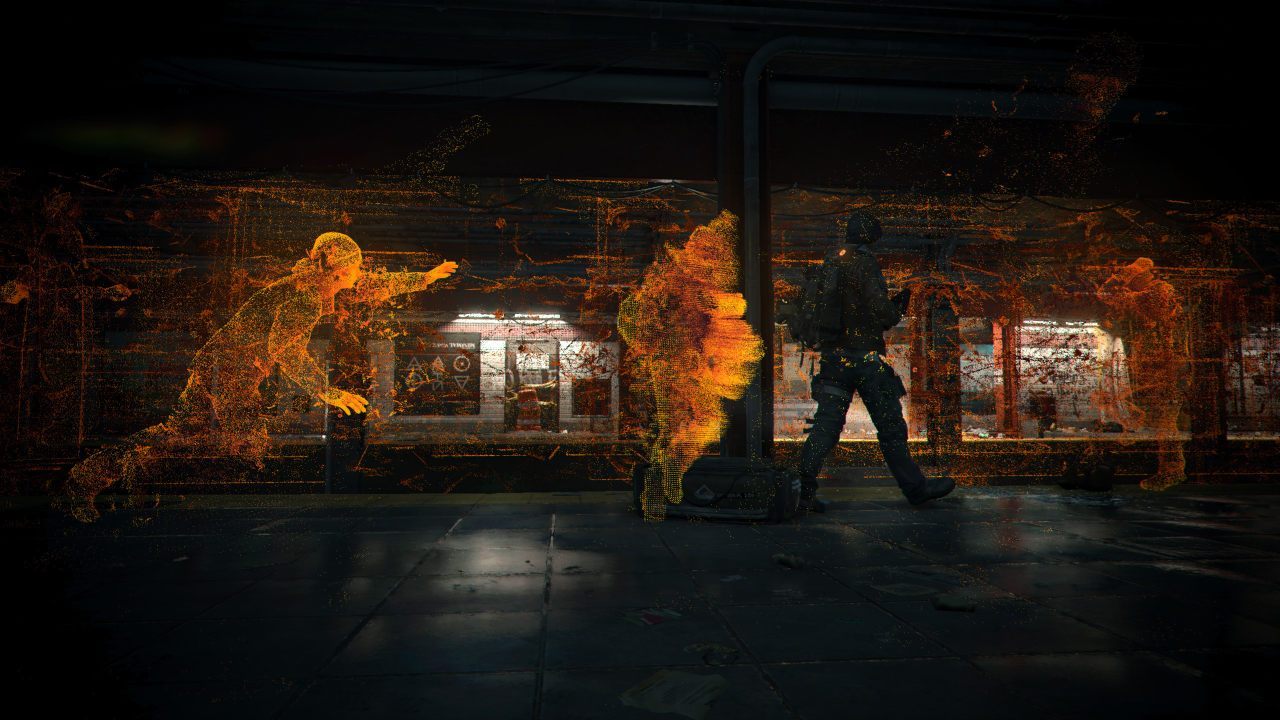
And sharing the experience with other players is definitely the point. You can get through almost all of the content on your own, but by far the best experiences are found in a group. Instanced missions grow steadily more difficult and are eventually nearly impossible to complete without the aid of a few good teammates. If you don’t have anyone on hand, the in-game matchmaking is quick, efficient, and intuitive. Early missions don’t require as much coordination as mere cooperation, but the end-game is made for the tactical depth that comes from mixing an array of abilities, talents, and gear specializations. It’s thrilling, it’s tough as nails, and it’s worth every minute.
Traversing the world between missions is a pleasure. Though “fast travel” options have been provided between safehouses, and even between members of a party, I frequently ran through the environment just for the sheer joy of it. The game world is a disastrous tableau of what Cliff Blezinski once famously dubbed “destroyed beauty,” and the disarray is visually magnetic. The environment is dense with detail, and there are countless thoughtful touches that I never would have expected to see.
The graphics may not be quite what Ubisoft boasted in earlier demos — as always, marketing tends to paint an idealized picture — but the game is still gorgeous. From a blizzard’s whiteout that accumulates on your character as they trudge forward to gentle falling snow in a night aglow with the strings of abandoned Christmas decor, the game is rarely less than stunning. Even the dogs defecating in alleyways add a certain air of realism. Walking by the morbid piles of unfinished mass graves causes carrion birds take sudden flight at your presence. Almost every step you take is one that bears some level of inspection. I felt like an apocalypse tourist; some sort of rubbernecking superman.
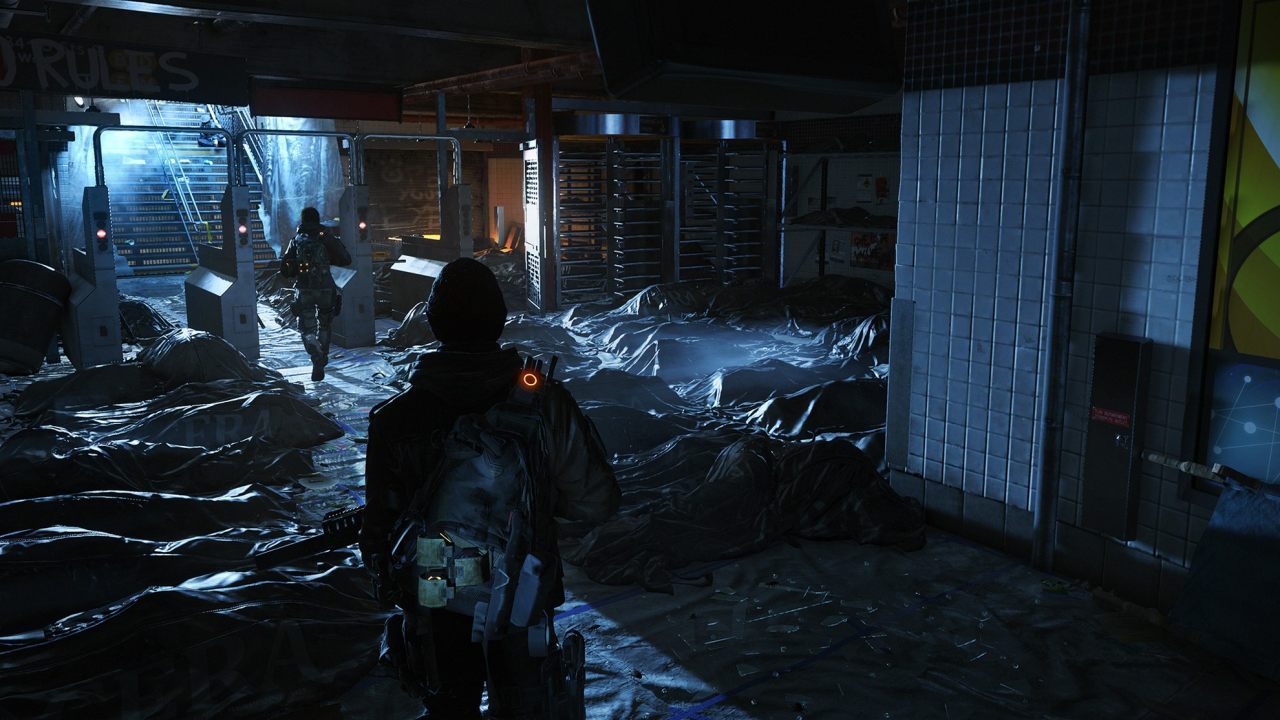
Even once you’ve scoured the massive urban landscape, there’s a generous portion of the map restricted to the PvP experience in the Dark Zone. The enemies inside are endless, ruthless, and some of them might be fighting right alongside you. At any point, agents in the Dark Zone can go rogue, attacking their fellows in order to steal some of the high-value loot found within the area. Whoever can manage to survive the gauntlet of bloodshed long enough to extract what they’ve found can walk away with PvP prestige “DZ” levels, items, and currency that can be used to buy from several of the Dark Zone specific vendors.
If you prefer the PvE, all of the instanced missions can be accomplished on Hard or Challenging modes to increase replayability. As previously noted, these practically require team coordination and sound tactics to accomplish and bring commensurate rewards to your efforts. Right now, the end game boils down to furtive exploration and retrieval in the Dark Zone and the accomplishment of these more challenging replayed missions.
The Division also represents the first time I’ve ever looked at a DLC season pass and been so invested in a game’s future. The listed upcoming content, in addition to the free updates on the way, is surprisingly robust. The Dark Zone is getting a massive expansion to its depth of gameplay, and a full “survival” style mode is being implemented as well. Those are just two of the half dozen compelling pieces of content on offer, and I can’t help but be excited to see the only (relatively) weak areas of the game being shored up so thoroughly, and the already excellent game experience being expanded.
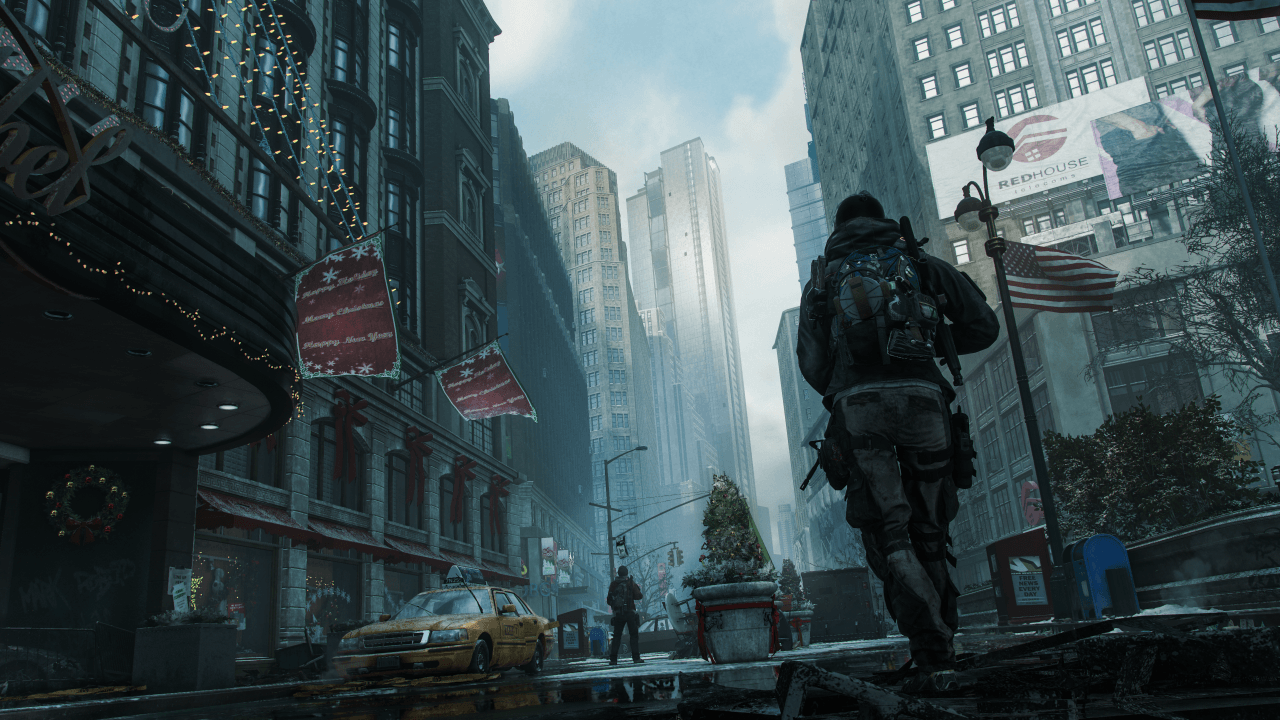
All in all, I can’t recommend Tom Clancy’s The Division enough. Ubisoft and Massive Entertainment have defied my expectations in a triumph of online gameplay and world design that should leave competitors like Bungie shaking in their boots. I haven’t felt so genuinely a part of a world since the debut of World of Warcraft, when the magic of massively multiplayer games was still new.
The Division isn’t just trying to save a dying city, it’s trying to save an entire genre along with it.
Editor’s note: This review is based on the PC version of The Division, a copy of which was provided by Ubisoft.
Follow Nate Church @Get2Church on Twitter for the latest news in gaming and technology, and snarky opinions on both.
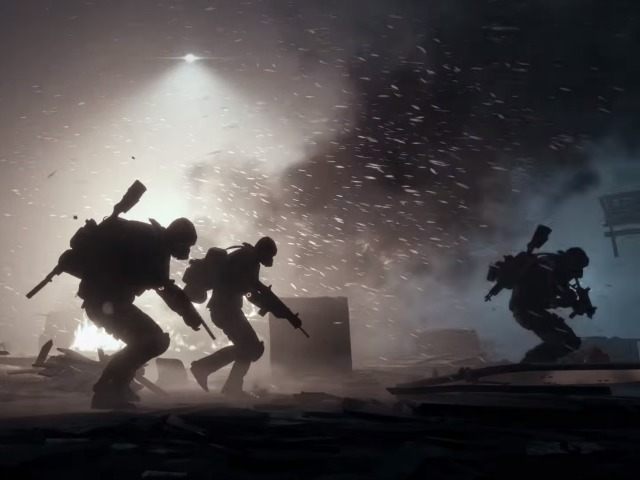
COMMENTS
Please let us know if you're having issues with commenting.